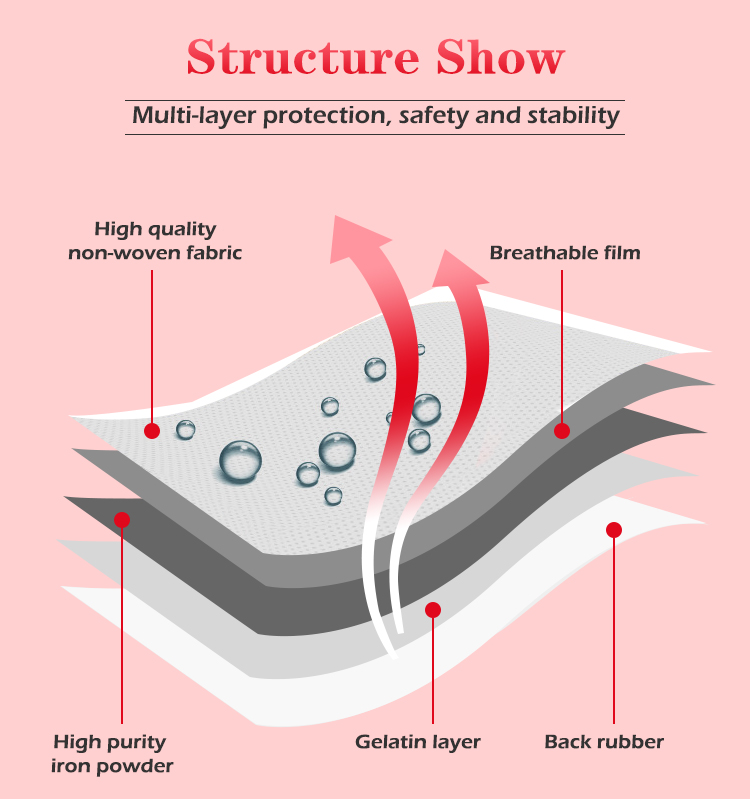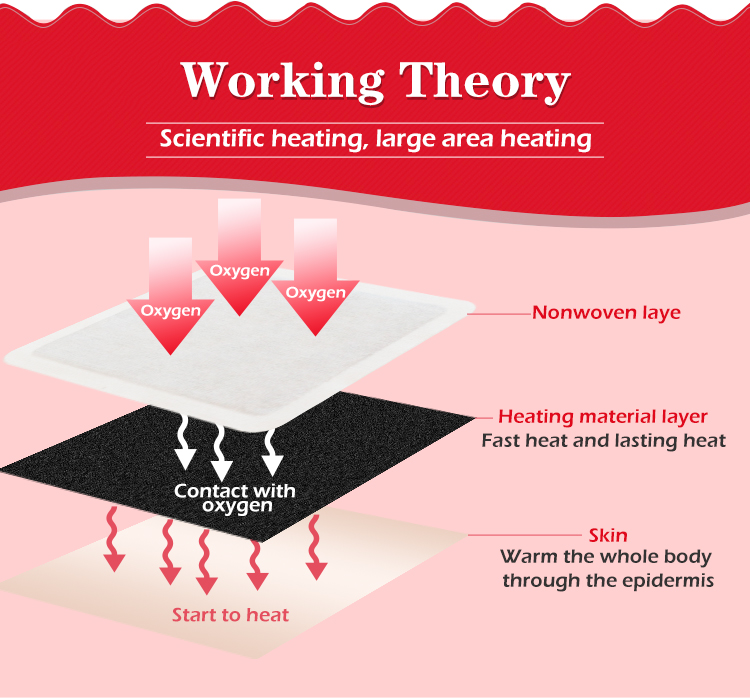How Can I Ensure Quality When Working with a Deep Heat Patches OEM?
Quality is one of the most critical aspects to consider when selecting a Deep Heat Patches OEM. A reliable Deep Heat Patches Manufacturer not only ensures consistent product performance but also upholds your brand’s reputation by delivering safe and effective pain relief patches. In this guide, we’ll discuss the best strategies for ensuring high quality when working with a Deep Heat Patches Supplier, covering everything from quality control measures and regulatory compliance to effective communication and customization options.

1. Research the OEM’s Certifications and Standards
Certifications are key indicators of an OEM’s commitment to quality. When evaluating a Deep Heat Patches Manufacturer, look for the following certifications:
- ISO 9001: This standard confirms the manufacturer has a quality management system in place, ensuring that every stage of production meets consistent quality standards.
- Good Manufacturing Practice (GMP): GMP certification is crucial in the healthcare and wellness sector. It guarantees that the manufacturer adheres to strict production standards to ensure safety and quality.
- ISO 13485: Specific to medical devices, this certification shows that the OEM is compliant with international standards, making it essential for private label deep heat patches marketed as therapeutic products.
These certifications demonstrate that the Deep Heat Patches OEM follows high-quality processes, reducing the risk of subpar products and building confidence in their reliability.
2. Establish Clear Quality Control Expectations
To ensure consistent quality, communicate your standards clearly. Discuss each step of the manufacturing process with the Deep Heat Patches Supplier and set specific quality benchmarks, such as:
- Material Quality: Ensure that materials like adhesives, patch layers, and heating elements are of the highest quality, durable, and non-irritating for all skin types.
- Performance Criteria: Define standards for heat duration, distribution, and intensity. For custom deep heat patches, confirm that product performance aligns with your brand’s specifications.
- Product Testing: Work with the OEM to establish regular product testing routines, including batch testing, temperature tests, and product lifespan assessments. Testing ensures that each private label deep heat patch meets the necessary quality and performance requirements.
3. Conduct On-Site Audits
Whenever possible, visit the manufacturing facility to observe their processes. During an on-site audit, pay attention to:
- Production Cleanliness: A clean production environment is essential, particularly for skin-contact products. Assess the factory’s cleanliness and whether they adhere to good hygiene practices.
- Equipment and Technology: Innovative technology often leads to better products. Check if the OEM uses advanced machinery for precision and consistency, such as automated filling and sealing machines.
- Quality Control Procedures: Observe the quality control checks in place, such as visual inspections, sampling, and testing. Effective quality control practices indicate a reliable Deep Heat Patches Supplier.
4. Request Product Samples
Before committing to a Deep Heat Patches Manufacturer, ask for product samples. Testing samples lets you:
- Evaluate Product Efficacy: Assess the effectiveness of the heat patches in terms of heat duration, intensity, and overall comfort.
- Check Material Quality: Observe the materials used in the samples, checking for durability, adhesion strength, and non-irritant properties for sensitive skin.
- Ensure Consistency: Order samples from different batches to see if the OEM can maintain uniform quality over time. Consistency is crucial for any private label deep heat patch product.
5. Define Customization Standards for Private Label Deep Heat Patches
Customization offers a way for your brand to stand out, but it must be executed with quality in mind. When working on custom deep heat patches, specify your requirements to the OEM regarding:
- Ingredients and Formulations: Clearly outline any active ingredients, such as menthol or capsaicin, and ensure that the OEM has experience with these formulations. For deep heat patches, consistency in the active ingredients is crucial for quality.
- Adhesive and Backing Material: Customizations in materials must align with quality expectations. The adhesive should be hypoallergenic and durable, while the backing should be breathable yet secure.
- Packaging Design: Ensure that packaging not only aligns with branding but also provides adequate protection against environmental factors. Quality packaging prevents the product from drying out or losing potency over time.
6. Ensure Compliance with Regulatory Standards
Products like deep heat patches must adhere to various safety and health regulations. Verify that the Deep Heat Patches OEM complies with both local and international standards, such as:
- FDA Compliance: For deep heat patches sold in the United States, FDA compliance is required. The OEM should be familiar with these guidelines and able to provide documentation upon request.
- EU Standards (CE Mark): If you plan to sell in Europe, the manufacturer should meet EU safety and quality standards, allowing the product to display the CE mark.
- Health and Safety Regulations: Ensure the manufacturer complies with labeling, safety, and ingredient disclosure regulations in your target markets.
A Deep Heat Patches Supplier who stays updated with regulatory changes and conducts regular audits helps prevent compliance-related issues, protecting your brand’s reputation.
7. Regular Communication and Collaboration with Your OEM
Open communication is key to a successful partnership. Establish regular check-ins with your Deep Heat Patches Supplier to discuss product performance, address concerns, and make improvements as needed. Some best practices for effective collaboration include:
- Monthly Quality Reviews: Schedule monthly quality review meetings to discuss production updates, product feedback, and any necessary adjustments.
- Transparent Reporting: Request transparency in production reports, including batch testing results, quality control measures, and any incidents during production.
- Feedback Loop: Establish a feedback loop where you can relay customer insights to the OEM, helping them make improvements that meet customer demands.
8. Utilize Technology to Monitor Quality
Many Deep Heat Patches Manufacturers now offer digital tools for better monitoring and quality assurance. Technologies like IoT sensors, cloud-based quality monitoring, and real-time production tracking provide:
- Enhanced Transparency: Track production in real-time, allowing you to address any issues before the product reaches your customers.
- Quality Data Analysis: Data on batch quality, error rates, and consistency allows for continuous improvement.
- Streamlined Testing and Reporting: Technology enables more efficient testing and reporting, ensuring that your product consistently meets quality standards.
9. Request Regular Product Testing Reports
Product testing is vital for private label deep heat patches to ensure safety, efficacy, and consistency. Ask the OEM to provide regular reports on testing results, such as:
- Temperature Consistency Tests: Ensure that each patch reaches and maintains the required heat levels for the intended duration.
- Adhesive Strength Tests: Check that the adhesive is strong enough to hold the patch in place but gentle enough for easy removal without skin irritation.
- Allergen Testing: For patches applied to the skin, confirm that the product is free from common allergens or irritants.
10. Build a Long-Term Relationship with Your Deep Heat Patches Supplier
Building a long-term relationship with a quality-focused Deep Heat Patches OEM fosters trust and consistency. A stable partnership with an OEM offers:
- Improved Product Development: Over time, your OEM becomes more familiar with your quality expectations, enabling faster and more efficient product iterations.
- Cost Savings: Loyal partnerships often lead to reduced production costs, as your supplier can plan and allocate resources more effectively.
- Consistency in Quality: Long-term OEM relationships improve production stability, allowing for consistent quality in your custom deep heat patches.
Common Questions and Answers on Ensuring Quality with a Deep Heat Patches OEM
1. What certifications should a Deep Heat Patches Manufacturer have?
- Look for ISO 9001, GMP, and ISO 13485 certifications to ensure the manufacturer follows strict quality standards.
2. How can I check the quality of products from a Deep Heat Patches Supplier?
- Request product samples and conduct thorough testing on heat duration, adhesive strength, and material quality.
3. How important is customization in ensuring quality for private label deep heat patches?
- Customization allows you to select materials and formulations that align with your quality expectations, making it essential for quality assurance.
4. What role does compliance play in choosing a Deep Heat Patches OEM?
- Compliance with FDA, EU, and other regulations ensures the product’s safety and legality, crucial for maintaining brand credibility.
5. Can technology help ensure quality in manufacturing deep heat patches?
- Yes, technologies like real-time production monitoring, IoT sensors, and data analysis can provide transparency and improve quality control.
6. How often should I communicate with my Deep Heat Patches Supplier?
- Schedule regular check-ins, ideally monthly, to review quality performance, discuss improvements, and address any issues promptly.
7. Why is long-term partnership important with an OEM?
- Long-term relationships foster trust, improve efficiency, and enhance consistency in quality, benefiting both the brand and OEM.
In conclusion, ensuring quality when working with a Deep Heat Patches OEM involves a combination of thorough research, clear communication, consistent testing, and strong partnerships. By following these strategies, brands can confidently deliver effective, high-quality deep heat patches that meet both customer expectations and regulatory standards.






